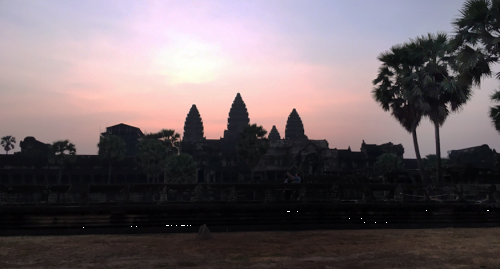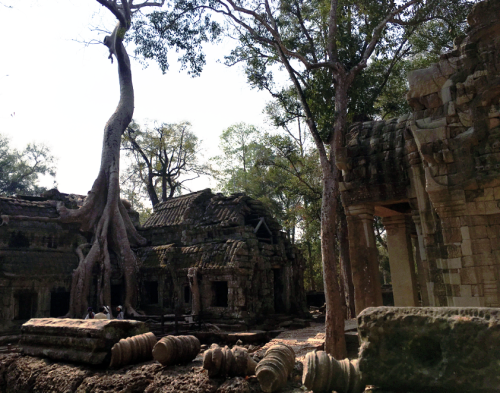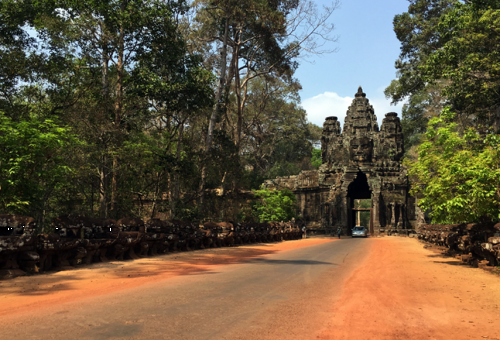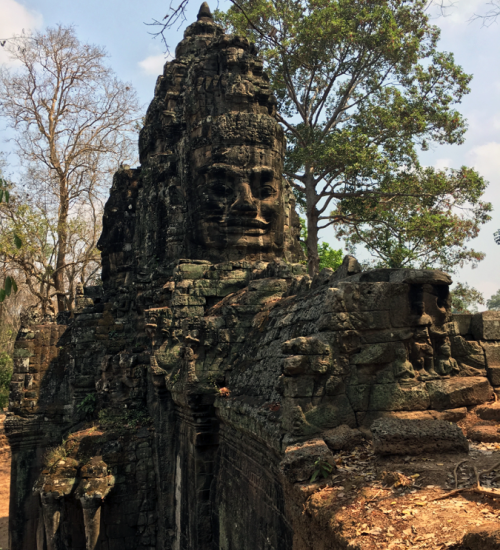Talking report cards in Kratie, Cambodia
Brianne Walsh ·This blog is part of the Basin Report Card Initiative: a partnership between the World Wildlife Fund (WWF) and the University of Maryland Center for Environmental Science (UMCES)
In March, Simon Costanzo and I traveled to Cambodia for the third workshop in the Linked Indicators for Vital Ecosystem Services (LIVES) Project, an initiative of the Luc Hoffman Institute. This five-day workshop brought us to the province of Kratie, a five-hour drive north of the capital, Phnom Penh. This trip was the third in a series of training sessions held in Cambodia (see previous blogs for part 1 and part 2) aimed at equipping a group of Ministry of Environment (MoE) staff with facilitation and technical skills to undertake workshops and ultimately develop a report card for the Mekong Flooded Forest Landscape.
We kicked off the workshop with a field trip to the flooded forest region of the Mekong River. The Mekong River is one of the few remaining free-flowing rivers in Asia, and on it’s 4200 km path from it’s headwaters in China to the China Sea, the river passes through five countries—China, Laos, Thailand, Cambodia, and Vietnam. The river and its floodplain provide many benefits to the Cambodian people: fish for food, water for transport, irrigation of rice fields, natural flood control, and habitat for a number of iconic and endangered species. All of these resources are threatened by human development and overuse.
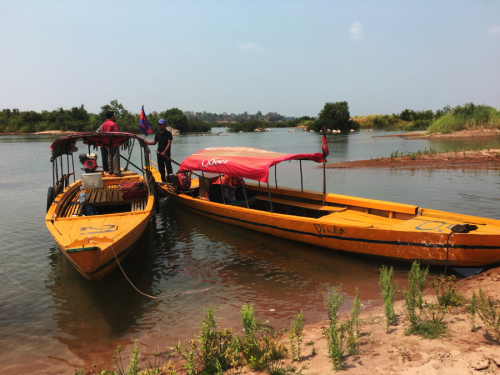
Ecotourism is a growing industry in Cambodia, especially in Kratie, where populations of Irrawady dolphins still inhabit a 118-mile stretch of the river. Threatened by habitat degradation and fisheries bycatch, the population of dolphins in the river is estimated to be around 80 individuals. We were lucky to see several dolphins during our field trip, as well as several groups of tourists on kayaking trips hoping to view the dolphins as well. As our boat group traversed the flooded forest, we identified and listed the different values and threats within the flooded forest that had been discussed in the two previous workshops, and upon returning to the meeting space that afternoon, kicked off the conversation by discussing our observations in the field, and whether there were any values and threats that had been previously omitted.
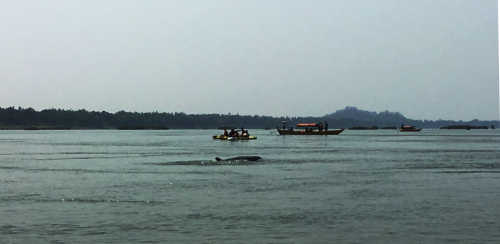
After three days of training, the MoE staff ran a day-long workshop with a group of local farmers to identify coping strategies to future climate scenarios. The farmers completed the SNAP activity, identifying values and threats that are important to their livelihoods, and then went through a hands on simulation of the ecosystem model, using water glasses to illustrate the gain and loss of resources.
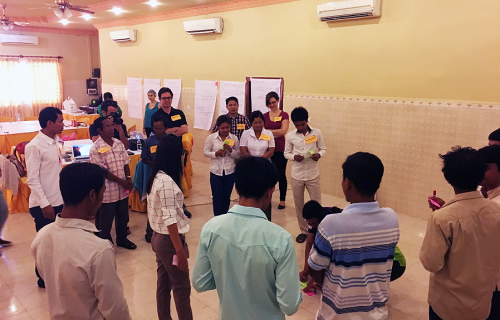
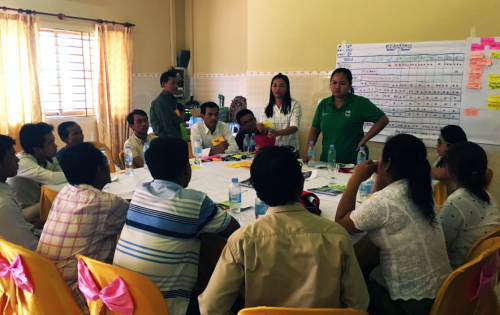
The final day of the workshop focused on engaging provincial staff in the ecohealth report card process. The MoE staff ran a day-long workshop for provincial stakeholders identifying potential report card indicators. Part of this day involved discussing indicators and thresholds, and the participants went through an activity introducing the importance of thresholds, and establishing appropriate thresholds. One of the ministry of the environment team members drew the outline of a person on a white board, and asked for examples of indicators that a doctor uses to tell if someone is sick. Answers like temperature and blood pressure were suggested, and then example thresholds for each were identified. For example, an ideal temperature threshold would be 98.6°F, where a temperature less than or greater than that threshold could indicate a problem. I found this to be a really effective method of illustrating the process of choosing indicators and thresholds.
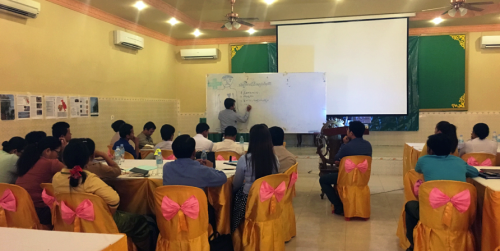
This was my first trip to Cambodia (and Asia!) so I was glad to be able to tack on an extra day to see a bit more of the country and spend the weekend in Siem Reap—especially before stepping onto the 14 plus hour flight back to the U.S. Siem Reap is home to Angkor, one of the most important archaeological sites in Southeast Asia, and a UNESCO world heritage site. The area includes the remains of capitals of the Khmer Empire, ranging from the 9th to 15th century. Angkor, is khmer for ‘capital’ and Wat is a Buddhist monastery or temple. We hired a tuk-tuk driver to take us to several of the temple sites, and had him suggest several ‘must see’ sights. The temples were each magnificent, and it was incredible to think where all of the stone originated from, and how each piece had been carved and set into place.
Because temperatures in March were reaching 105 degrees during the day, we set off for the temples at 5:15 am, joining thousands of tourists who were there to watch the sunset rise perfectly over the five towers of Angkor Wat. After a day of traveling among the temples, it was off to the Siem Reap airport to catch the 45 minute flight back to Phnom Penh, and relax for a few hours before our flight back to the US that evening.
